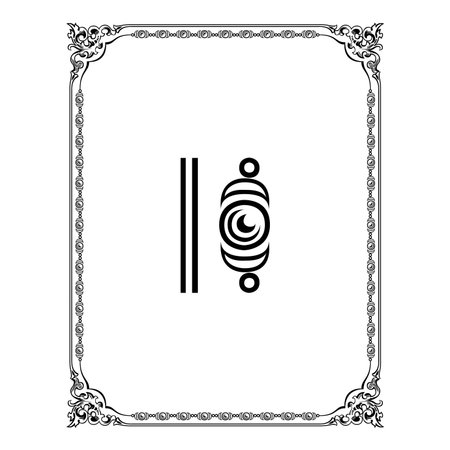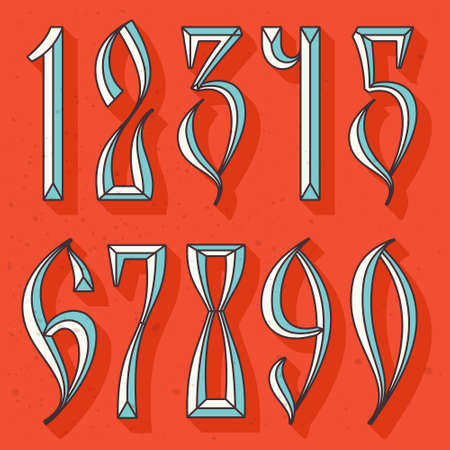Introduction: The Death Card and Its Symbolism
When it comes to tarot, few cards elicit as strong a reaction as the Death card. In the UK, as elsewhere, its appearance in a reading is often met with apprehension—an understandable response given its striking name and imagery. Yet, despite popular belief, the Death card rarely signifies physical death. Instead, it symbolises transformation, endings, and the renewal that follows. This distinction is crucial, not just for seasoned tarot readers but also for anyone curious about how this archetype plays into our collective psyche. By exploring the deeper meaning of the Death card within British cultural contexts, we can begin to unravel misconceptions and appreciate its true message: profound change and rebirth, rather than literal demise. As we embark on this journey through symbolism and societal attitudes, let’s set aside fear and open ourselves to the possibility that endings—while sometimes uncomfortable—are often the catalyst for growth and new beginnings.
2. Transformation and Renewal: Beyond the Grim Reaper
When most people lay eyes on the Death card, especially in the context of British culture, there’s a tendency to brace oneself for bad news, as if the “Grim Reaper” himself has come calling. However, the true heart of the Death card in tarot is all about transformation—shedding old skins and embracing new beginnings. In the UK, we have a long-standing tradition of seeing endings not just as finality but as opportunities for a “fresh start.” As we say, “out with the old, in with the new.” The Death card encourages us to let go of what no longer serves us, be it habits, relationships, or even outdated perspectives—a bit like having a good spring clean or giving something “the old heave-ho.” This mindset aligns with British attitudes that value resilience and adaptability during life’s transitions. Whether it’s turning over a new leaf or starting afresh after being “thrown in at the deep end,” the Death card embodies the spirit of facing change head-on with a stiff upper lip. Here’s a quick look at how this transformation theme weaves into everyday British expressions and cultural attitudes:
British Idiom |
Meaning |
Death Card Connection |
|---|---|---|
Turn over a new leaf |
To make a fresh start or change one’s behaviour | Represents personal renewal and moving forward |
Out with the old, in with the new |
Letting go of outdated things to embrace new ones | The core message of transformation within the Death card |
The old heave-ho |
Getting rid of something no longer needed | Letting go to create space for growth |
A clean slate |
Starting again without prejudice or baggage from the past | The opportunity for rebirth signified by endings |
Phoenix from the ashes |
Emerging renewed after adversity or loss | The ultimate image of transformation and hope after an ending |
This cultural lens shows that while endings may feel daunting, they are often greeted with pragmatism and optimism in the UK. The Death card thus becomes less about doom and gloom and more about recognising when it’s time to close one chapter and confidently begin another.

3. British Perspectives on Endings
Within the UK, endings—be they personal, professional, or cultural—are often met with a uniquely British approach. This is perhaps best encapsulated by the iconic ‘stiff upper lip’, a phrase that signals emotional restraint and dignified acceptance in the face of change or loss. Rooted in centuries of social history, this attitude shapes not only how individuals process endings but also how communities collectively mark them.
The British tradition is not solely about quiet stoicism, however. There are deeply embedded communal rituals that help people move through farewells and transitions. Funerals, wakes, and remembrance services are moments where shared reflection and storytelling become acts of collective healing. Whether it’s gathering at a local pub after a memorial or observing Remembrance Day with poppies and silence, these customs give structure to grief and transformation.
Moreover, the language of endings in Britain is subtly coded: phrases like “moving on,” “closing a chapter,” or even simply “farewell” carry layers of meaning, often masking vulnerability behind wit or understatement. At work, leaving parties may mix humour with nostalgia—think speeches peppered with self-deprecating jokes and rounds of drinks to toast both achievements and departures. Social rituals such as these allow for both acknowledgement of change and affirmation of ongoing connection.
In sum, the British response to endings blends private resilience with public ritual. While many might appear reserved on the surface, there is an underlying current of communal support and subtle emotional expression that helps individuals and groups navigate the uncertainties brought by transformation—themes beautifully mirrored in the symbolism of the Death card itself.
4. Death, Taboo, and Humour: A British Approach
The British approach to death is a fascinating interplay of understatement, wit, and subtlety—a dance that allows people to engage with this heavy topic without being overwhelmed by its gravity. While the Death card in tarot symbolises transformation and endings, the way British society navigates the subject of death is deeply reflective of cultural attitudes that favour indirectness over drama. In daily life, humour acts as both shield and bridge, softening the sharp edges of mortality and creating space for honest conversations without discomfort.
Understatement as a Cultural Strategy
Turning Down the Volume
British understatement is legendary. Rather than confronting death head-on with grand gestures or overt grief, many Brits prefer euphemisms or gentle turns of phrase—“passed away,” “gone to a better place,” or even “popped their clogs.” This linguistic restraint can be seen as a form of emotional self-regulation, helping individuals maintain dignity and composure during challenging times.
| Common Euphemisms | Implied Meaning |
|---|---|
| Kicked the bucket | Died (used humorously) |
| No longer with us | Passed away (polite) |
| Gone to meet their maker | Died (gently spiritual) |
| Popped their clogs | Died (colloquial, light-hearted) |
This tendency towards understatement not only preserves social harmony but also reflects a broader reluctance to make one’s emotions conspicuous—an echo of the famous “stiff upper lip.”
The Role of Humour in Navigating Taboo
Laughter in the Face of Loss
If understatement sets the tone, humour provides the soundtrack. Comedy has long been a tool for addressing uncomfortable subjects in Britain, from Shakespeare’s black comedies to modern sitcoms like “The League of Gentlemen” and “After Life.” Even funeral speeches often include witty anecdotes or gentle jokes about the deceased—an approach that celebrates life while acknowledging loss.
| Cultural Context | Example of Humour Used |
|---|---|
| Funeral Toasts | “He always said hed be late to his own funeral—and look at him now.” |
| TV & Radio Comedy | “Monty Pythons Dead Parrot sketch” satirising mortality |
| Family Gatherings | Anecdotes that poke fun at quirks of the departed |
This unique blend of wit and respect offers a powerful coping mechanism. By making space for laughter alongside sorrow, British culture encourages emotional resilience—a kind of alchemy where taboo becomes talkable, and endings transform into moments of connection.
The Death Card in British Cultural Contexts
When it comes to tarot readings in the UK, the Death card’s message is often filtered through these cultural lenses. Instead of fixating on literal interpretations, practitioners may use humour or gentle understatement to guide querents towards understanding transformation as an opportunity rather than a threat. This approach mirrors wider societal patterns: death is not denied or dramatised; it is integrated through language, laughter, and quiet acceptance—reminding us that even endings can carry hope and humanity.
5. From Tarot to Everyday Life: Embracing Change in the UK Context
When we consider the Death card within the unique tapestry of UK society, it’s fascinating to see how this ancient symbol of transformation echoes through everyday British experiences. The card’s essence—endings that pave the way for new beginnings—translates remarkably well into real-life moments, whether personal or national. Let’s delve into how this tarot archetype resonates with job transitions, relationship changes, and even collective events that have shaped Britain’s cultural psyche.
Job Transitions: Reimagining Security and Opportunity
Across the UK, shifting careers or facing redundancy are often met with a very British blend of stoicism and quiet resolve. The Death card’s reminder that old chapters must close for growth to occur mirrors the reality many face when industries evolve or economic winds shift. In cities like Manchester or London, where the gig economy and tech sectors flourish, workers are learning to shed outdated roles and embrace reskilling—demonstrating that what feels like an end can become a launchpad for reinvention.
Relationship Changes: Navigating Endings With Grace
In a culture known for its understated approach to emotion, Brits may not always wear their hearts on their sleeves when relationships end. Yet, there is an unspoken wisdom in how communities support one another through divorce or heartbreak—often with a cup of tea and a gentle “chin up.” The Death card here isn’t about mourning loss but acknowledging that letting go is sometimes essential for healthier connections to emerge. This perspective is embedded in everything from local support groups to national conversations about mental health and wellbeing.
National Transformations: Collective Endings and New Beginnings
The symbolism of the Death card extends beyond individual lives to moments of profound collective change. Think Brexit—a seismic shift that divided opinion but undeniably marked the end of an era and the start of a new chapter in Britain’s story. Whether through royal successions, societal reckonings like the Windrush scandal, or public health crises such as COVID-19, the nation has repeatedly demonstrated its capacity to adapt, mourn what’s lost, and forge ahead with characteristic resilience.
The British Attitude: Pragmatism Meets Hope
If there’s a thread running through these examples, it’s the distinctly British knack for meeting endings not with melodrama but with pragmatic optimism. Like the Death card itself, which promises regeneration after loss, UK culture values moving forward—often quietly, sometimes defiantly, but always with an eye toward renewal. By viewing transformation as both inevitable and potentially empowering, Britons continually reinterpret what it means to begin anew.
6. Conclusion: The Death Card as Inspiration for Personal Growth
The Death card, far from being an omen of doom, stands as a powerful symbol for transformation and renewal—an idea that resonates deeply within British culture. At its core, the Death card invites us to embrace change rather than fear it, reminding us that endings are not just closures but opportunities for new beginnings. This perspective can be particularly inspiring in the UK, where history and tradition meet constant reinvention, from the resilience of the Blitz spirit to the adaptability seen in modern British society.
Through a uniquely British lens, the Death card encourages us to cultivate resilience—the kind celebrated in stories of perseverance through hardship. It calls on individuals to adapt with grace and fortitude, echoing the national value of “keeping calm and carrying on” even when faced with profound shifts in life. By accepting life’s inevitable changes, we open ourselves up to growth and regeneration, much like Britain’s ability to evolve while honouring its past.
Moreover, the Death card embodies a subtle but persistent sense of hope—a hope rooted not in denial of loss but in the understanding that every ending seeds a new chapter. This is reflected in British cultural attitudes towards grief and renewal, where humour and stoicism often coexist with deep emotional undercurrents. The card thus serves as a gentle prompt to find meaning and opportunity amid transitions, whether personal or collective.
In summary, integrating the wisdom of the Death card into everyday life can inspire us all to face changes with courage and optimism. It reminds us that transformation is not just necessary but also empowering—a message perfectly aligned with the enduring spirit found across the United Kingdom. As we navigate our own cycles of endings and beginnings, we can draw strength from this archetype, fostering adaptability and hope in true British fashion.


